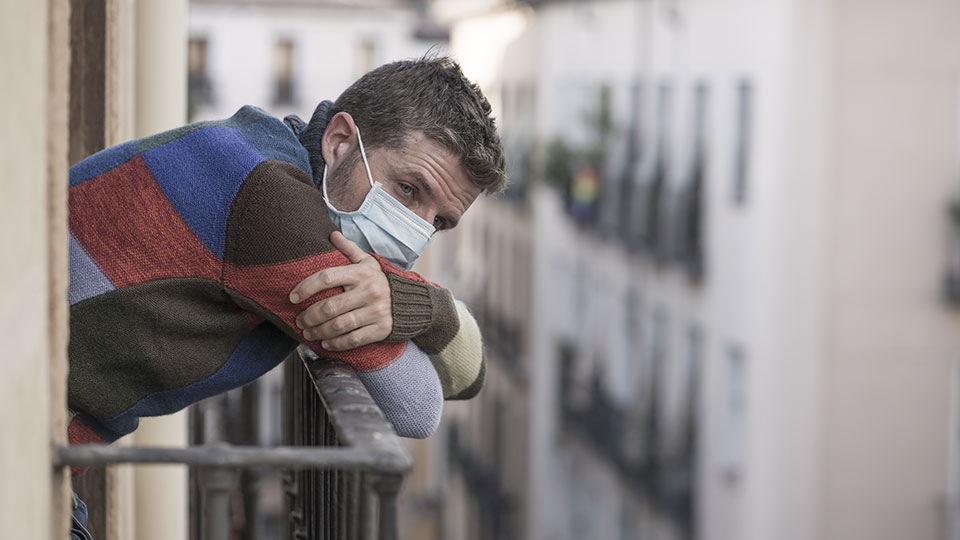
As the world struggles to contain the spread of COVID-19, many countries grapple with the possibility of imposing more lockdown measures, like those widely used in the spring of 2020. But how well do lockdowns work at keeping people home? New research from Maryland Smith’s Yogesh Joshi finds they are effective – but for limited periods of time.
Joshi, a marketing professor, worked with Andres Musalem of the University of Chile on this research published in Scientific Reports by Nature. They looked at how well lockdowns work to keep people from leaving home and how mobility evolves during the duration of the lockdown.
Joshi and Musalem analyzed data from 93 countries. To measure mobility, they used data collected by Google from mobile device users who opted to share their location history. The data shows where a user goes and how long they stay. For comparison, the researchers used baseline data from users from the first five weeks of 2020 – before the pandemic ramped up and lockdowns were imposed.
The researchers also used data that detailed when lockdowns were put into effect, how restrictive they were, and how long they lasted.
“We found that lockdowns work, but their effect dissipates over time,” Joshi says.
Joshi and Musalem find that at the start of the lockdown, mobility falls by 36% below the baseline. Mobility keeps going down for the first two weeks or so of a lockdown – by another 18%.
“If you compare before the lockdown and the minimum mobility during the lockdown, mobility reduces by half about two weeks or so into the lockdown,” says Joshi.
But after two weeks, mobility starts going back up, even when a country is still in a lockdown. That relapse in mobility continues to happen. About a month from when it starts relapsing, a third of the gain achieved from the lockdown is lost. And it keeps slipping.
“About four months into a lockdown, all the effects of the lockdown are washed away,” Joshi says.
“What this research is essentially finding is that lockdowns are effective at getting mobility down and reducing it for a few weeks or so, but then after that point, mobility starts climbing back up.”
That’s because people often can’t – or just don’t want to – stay home for so long, says Joshi.
The research doesn’t get into the reasons why, but Joshi speculates reasons for this observed lockdown fatigue could include that some people just need to get back to work, along with restlessness.
The researchers also looked at how mobile a country’s population was before the lockdown and whether that played into how effective lockdowns were at keeping people home. For countries that already had stringent restrictions in place to help control the spread of COVID, the lockdown itself had a small effect in further restricting mobility.
“If you look at places that had low mobility levels even before a lockdown was imposed, having more stringent policies in place as well as higher levels of education were significant predictors. If instead you look at places with higher reductions in mobility after imposing the lockdown, having less stringent policies in place prior to the lockdown and higher life expectancy were significant predictors,” Joshi says.
In countries where mobility levels were higher before the lockdown, people stayed home longer during lockdowns and lockdown fatigue was lower. And when the researchers found a lockdown achieved a greater reduction in mobility at first, they found that the rebound back to people being more mobile a few weeks into the lockdown was higher.
“That points to a cumulative restlessness, or lockdown fatigue,” Joshi says. “If there are greater mobility levels before the lockdown, you see the rebound is weaker. If there was a big drop in mobility because of the lockdown, you see that the rebound is actually stronger.”
Going forward, policymakers can use the research findings when considering whether to impose lockdowns.
“There’s definitely a role for lockdowns,” Joshi says. “They do have an impact. They definitely reduce mobility. But policymakers and decision makers have to recognize that the effects start diminishing after a while, and lockdown fatigue kicks in.”
That means policymakers need to get creative and not just rely on lockdowns to actually keep people at home for more than a few weeks, says Joshi.
“A bigger implication of this finding is that policymakers probably then need to start thinking about other things that can be done – things like incentives that would keep people at home, wage incentives, activities to combat lockdown fatigue – if they want people to stay home.”
Read the research, “Lockdowns Lose One-Third of Their Impact on Mobility in a Month,” in Scientific Reports published by Nature.
Media Contact
Greg Muraski
Media Relations Manager
301-405-5283
301-892-0973 Mobile
gmuraski@umd.edu
Get Smith Brain Trust Delivered To Your Inbox Every Week
Business moves fast in the 21st century. Stay one step ahead with bite-sized business insights from the Smith School's world-class faculty.